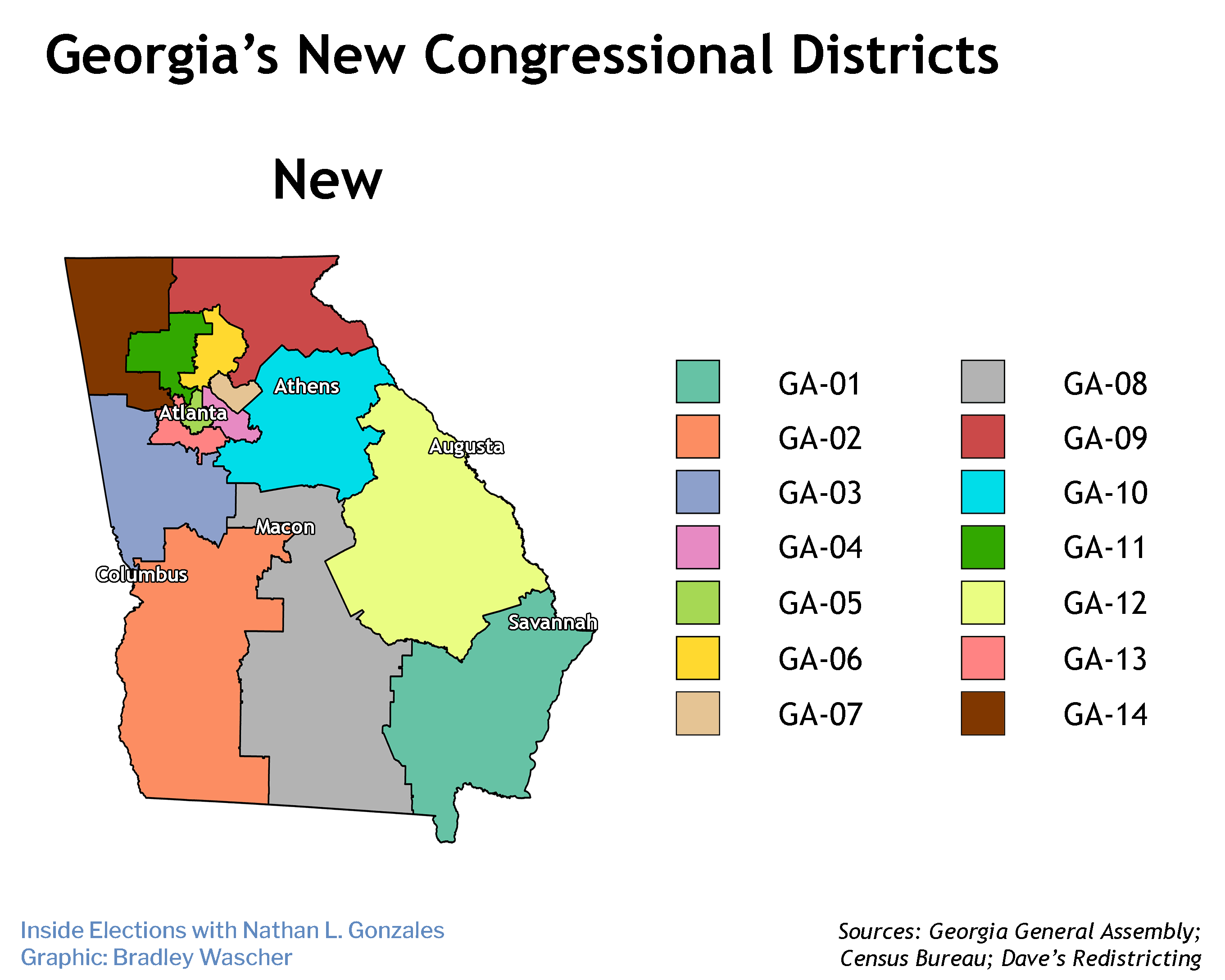Georgia Republicans are on their heels. After nearly two decades of dominating statewide politics, the GOP came within two points of losing the governorship for the first time in 16 years, failed to deliver the state’s electoral votes to the Republican candidate for president for the first time since 1992, and lost both of the state’s Senate seats.
And the GOP is also down two House seats, both rock solid Republican districts that moved rapidly toward Democrats over the last decade.
While the GOP-controlled legislature can’t stop the state’s march toward swing state status, they do have the power to shore up the party’s congressional prospects, and they did just that during this cycle’s decennial redistricting, by combining two Democratic-held districts and creating a new, open Republican-leaning seat.
While the state’s congressional delegation is currently eight Republicans and six Democrats, the new GOP-drawn congressional map will likely ensure at least a 9R-5D split next year, while forcing the two Democrats who flipped seats over the past decade into a battle royale.

1st District
Republican Buddy Carter’s southeast Georgia seat is largely unchanged. It would have voted for President Donald Trump 56-43 percent in 2020. Initial rating: Solid Republican.
2nd District
Democrat Sanford Bishop’s southwest Georgia seat had to grow the most of any district in the state to meet its target population. It did so by expanding into Thomas County on the Florida border. The partisanship of the district is largely unchanged: Joe Biden would have won here, 55-44 percent. Army veteran Jeremy Hunt is running as a Republican and has endorsements from Sens. Josh Hawley and Tom Cotton but the district’s Democratic lean means he’ll start as a serious underdog even in a...

